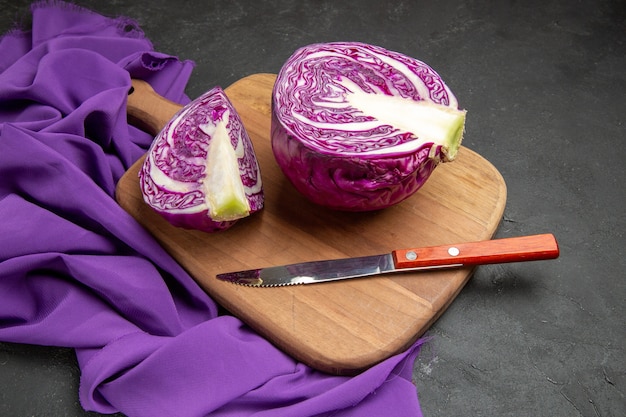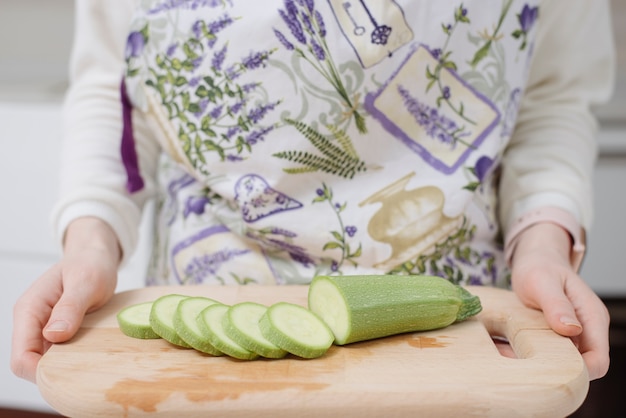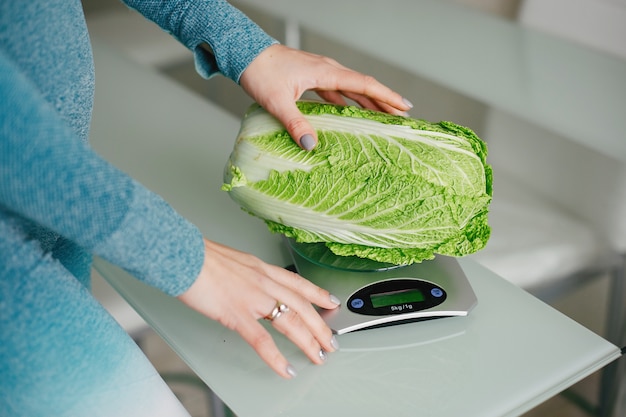Cabbage. It’s a staple in many kitchens, yet often relegated to the back of the crisper drawer, a culinary afterthought. But trust me, when cooked properly, cabbage can be a delicious and versatile ingredient. It’s that satisfying crunch, the subtle sweetness, and the earthy flavor that make it truly rewarding. And the key to unlocking its full potential? Understanding how long to cook it. (Part 1)
Why cabbage cooking time Matters

Let's face it, nobody wants a soggy, overcooked cabbage. It turns into a mushy mess, losing its texture and character. Imagine a wilted, pale green pile, devoid of any life. On the other hand, undercooked cabbage can be tough and unappetizing. It's all about finding that sweet spot, that perfect balance between tender and slightly firm, where the cabbage still has a bit of bite.
Factors That Influence Cabbage Cooking Time
Cabbage cooking time isn't a simple one-size-fits-all equation. Here's a breakdown of factors that influence how long you should cook it:
- Type of Cabbage: Green cabbage, the most common variety, is usually quicker to cook than red cabbage, which tends to be a bit tougher. Savoy cabbage, with its crinkly leaves, can also take a bit longer to soften.
- Size and Thickness: A whole head of cabbage will take longer to cook than wedges or shredded cabbage. Think about the surface area exposed to heat - the more surface area, the faster it cooks.
- Cooking Method: Boiling or steaming will generally cook cabbage faster than roasting or braising. Think about the directness of the heat and the amount of moisture present.
- Desired Texture: Do you want it tender and soft, perfect for a side dish, or do you prefer it with a bit more bite, ideal for coleslaw or stir-fries? The texture you're aiming for will determine the cooking time.
Cooking Cabbage: A Step-by-Step Guide

Now, let's get down to the nitty-gritty. Here's a comprehensive guide to cooking cabbage to perfection, using different methods.
Boiling Cabbage: The Classic Approach
Boiling is the classic way to cook cabbage, and it's surprisingly simple. Just fill a large pot with water, bring it to a rolling boil, and then add your chopped cabbage.
- Whole Head: For a whole head of cabbage, you'll need to boil it for about 10-15 minutes, depending on the size. Start with 10 minutes and check for tenderness; add a couple of minutes if needed.
- Wedges: If you're cooking wedges, they'll be done in about 5-8 minutes. Again, start with the shorter time and adjust accordingly.
- Shredded: Shredded cabbage will cook even faster, usually in about 3-5 minutes. Shredding increases the surface area, leading to faster cooking.
Once the cabbage is tender, but still slightly firm, drain it well. You'll know it's ready when a fork easily pierces the thickest part.
Steaming Cabbage: A Healthier Option
If you're looking for a healthier way to cook cabbage, steaming is a fantastic choice. It's quick, easy, and preserves more of the cabbage's nutrients. Plus, it doesn't require any added oil or fat.
- Wedges: Place the wedges in a steamer basket and steam for about 5-8 minutes.
- Shredded: Shredded cabbage will steam in about 3-5 minutes.
Once the cabbage is tender, remove it from the steamer basket and serve immediately. (Part 3)
Roasting Cabbage: Bringing Out the Sweetness
Roasted cabbage is a real treat. It develops a beautiful caramelization on the outside, a delightful contrast to the tender, slightly sweet interior. Roasting also intensifies the natural flavors of the cabbage.
- Wedges: Preheat your oven to 400°F (200°C). Toss the wedges with olive oil, salt, and pepper, then spread them on a baking sheet. Roast for about 30-40 minutes, flipping them halfway through.
- Shredded: Spread shredded cabbage on a baking sheet, drizzle with olive oil, and sprinkle with salt and pepper. Roast for about 15-20 minutes, tossing halfway through.
You can elevate the flavor even further by adding garlic, onions, or your favorite spices. Rosemary, thyme, and cumin pair particularly well with roasted cabbage.
Braising Cabbage: Slow and Tender
Braising is a fantastic method for cooking cabbage slowly and gently, resulting in a tender, flavorful dish. It's a perfect way to create a hearty and comforting meal.
- Whole Head: Cut the cabbage in half, and then remove the core. Place the cabbage halves in a dutch oven, with a little bit of liquid like broth or water. Cover and braise for about 30-45 minutes, until the cabbage is tender.
- Wedges: Place the wedges in a Dutch oven with some liquid and any other ingredients you want. Cover and braise for about 15-20 minutes, until the cabbage is tender.
braised cabbage is particularly delicious with bacon, sausage, or other savory ingredients. Think of it as a base for a rich, comforting stew. (Part 4)
Cabbage Cooking Time Chart

Here's a handy chart that summarizes the recommended cooking times for different types and preparations of cabbage.
| Type of Cabbage | Cooking Method | Cooking Time (Minutes) |
|---|---|---|
| Whole Head (Green) | Boiling | 10-15 |
| Whole Head (Red) | Boiling | 12-18 |
| Wedges (Green or Red) | Boiling | 5-8 |
| Shredded (Green or Red) | Boiling | 3-5 |
| Wedges (Green or Red) | Steaming | 5-8 |
| Shredded (Green or Red) | Steaming | 3-5 |
| Wedges (Green or Red) | Roasting | 30-40 |
| Shredded (Green or Red) | Roasting | 15-20 |
| Whole Head (Green or Red) | Braising | 30-45 |
| Wedges (Green or Red) | Braising | 15-20 |
Remember, these are just guidelines. Always check the cabbage for tenderness using a fork. It should be tender but not mushy. (Part 5)
Tips for Perfect Cabbage
Here are a few tips to help you make the most of your cabbage cooking experience:
- Check for Tenderness: The best way to know if your cabbage is cooked is to poke it with a fork. It should be tender but still have a little bit of resistance.
- Don't Overcook: Overcooked cabbage loses its crunch and can become mushy. It's better to undercook slightly than overcook.
- Season Generously: Cabbage is a blank canvas for flavor. Don't be afraid to season it generously with salt, pepper, and your favorite spices.
- Add a Splash of Vinegar: A little bit of vinegar can help to brighten up the flavor of cabbage, especially when it's cooked in a creamy sauce. Apple cider vinegar and red wine vinegar work particularly well.
- Don't Be Afraid to Experiment: Cabbage is incredibly versatile. Experiment with different cooking methods, flavors, and combinations.
cabbage recipes You'll Love
Now that you're a cabbage-cooking pro, here are a few recipes to get your creative juices flowing:
Classic Braised Cabbage with Bacon
This is a classic for a reason. The sweet, savory flavors of braised cabbage and crispy bacon are a match made in heaven. The long, slow braising process creates a tender, flavorful cabbage that melts in your mouth.
Ingredients:
- 1 head green cabbage, cut into wedges
- 1/2 pound bacon, diced
- 1 onion, chopped
- 2 cloves garlic, minced
- 1 cup chicken broth
- Salt and pepper to taste
Instructions:
- In a large Dutch oven, cook the bacon over medium heat until crispy. Remove the bacon from the pot and set aside.
- Add the onion and garlic to the pot and cook until softened, about 5 minutes.
- Add the cabbage wedges, chicken broth, salt, and pepper to the pot. Bring to a boil, then reduce heat to low, cover, and simmer for 30-45 minutes, or until the cabbage is tender.
- Stir in the cooked bacon and serve immediately.
Colcannon: A Hearty Irish Delight
Colcannon is a traditional Irish dish made with mashed potatoes, cabbage, and often other ingredients like leeks, scallions, or bacon. It's hearty, comforting, and delicious, perfect for a cold evening.
Ingredients:
- 4 pounds potatoes, peeled and quartered
- 1 head green cabbage, shredded
- 1/2 cup milk
- 1/4 cup butter
- Salt and pepper to taste
- Optional: 1/2 cup chopped bacon or scallions
Instructions:
- Boil the potatoes in a large pot of salted water until tender, about 20 minutes.
- While the potatoes are cooking, sauté the cabbage in a large skillet with butter until wilted, about 5 minutes.
- Drain the potatoes and return them to the pot. Add the milk and butter and mash until smooth.
- Stir in the cooked cabbage and season with salt and pepper to taste.
- Stir in the bacon or scallions, if desired.
Cabbage Soup: A Light and Healthy Meal
Cabbage soup is a perfect light and healthy meal. It can be made with a variety of vegetables and spices to suit your taste.
Ingredients:
- 1 tablespoon olive oil
- 1 onion, chopped
- 2 cloves garlic, minced
- 1 head green cabbage, shredded
- 4 cups chicken or vegetable broth
- 1 (14.5 ounce) can diced tomatoes, undrained
- 1 teaspoon dried thyme
- Salt and pepper to taste
Instructions:
- Heat the olive oil in a large pot over medium heat. Add the onion and cook until softened, about 5 minutes.
- Add the garlic and cook for 1 minute more.
- Stir in the cabbage, broth, tomatoes, thyme, salt, and pepper. Bring to a boil, then reduce heat to low and simmer for 20-30 minutes, or until the cabbage is tender.
- Serve hot.
FAQs
Here are some frequently asked questions about cabbage cooking time:
1. Can I cook cabbage in the microwave?
Yes, you can cook cabbage in the microwave. However, it's not the best method for achieving a tender, flavorful cabbage. The microwave can often make it mushy and less appealing. It's better to stick with boiling, steaming, roasting, or braising.
2. Is it better to cook cabbage with or without the core?
It's generally best to remove the core of the cabbage before cooking. It can be tough and doesn't cook as quickly as the rest of the cabbage.
3. Can I eat raw cabbage?
Yes, you can eat raw cabbage. In fact, it's a great source of nutrients and fiber. You can add it to salads, coleslaws, or use it as a wrap for sandwiches.
4. How long does it take to cook cabbage for sauerkraut?
The cooking time for sauerkraut varies depending on the recipe and method. Generally, it takes about 1-2 hours to cook cabbage for sauerkraut. Sauerkraut is a fermented cabbage dish, which requires a longer cooking time to achieve its unique flavor and texture.
5. Can I freeze cooked cabbage?
Yes, you can freeze cooked cabbage. It's best to freeze it in portions so that you can defrost only what you need. (Part 8)
Conclusion
There you have it, a comprehensive guide to mastering cabbage cooking time. It's not as complicated as you might think. Just keep these tips in mind, and you'll be on your way to enjoying delicious and perfectly cooked cabbage. Remember, it's all about finding that sweet spot, that perfect balance between tender and crunchy, that makes cabbage shine. Happy cooking!
Everyone is watching

Prime Rib Roast Cooking Time Chart: Per Pound Guide
Cooking TipsPrime rib roast. Just the name conjures images of lavish dinners, crackling fires, and hearty laughter. It’s ...

How Long to Bake Potatoes in the Oven (Perfect Every Time)
Cooking TipsBaked potatoes are a staple in my kitchen. They're incredibly versatile, delicious, and surprisingly easy to m...

Perfect Rice Every Time: The Ultimate Guide to Cooking Rice
Cooking TipsAs a self-proclaimed foodie, I've always been a bit obsessed with rice. It's the foundation of countless cuisi...

The Ultimate Guide to Cooking Asparagus: Tips, Techniques, and Recipes
Cooking TipsAsparagus. The mere mention of this spring delicacy conjures up images of vibrant green spears, crisp and burs...

Ultimate Guide to Cooking the Perfect Thanksgiving Turkey
Cooking TipsThanksgiving. Just the word conjures up images of overflowing tables laden with delicious food, the scent of r...
